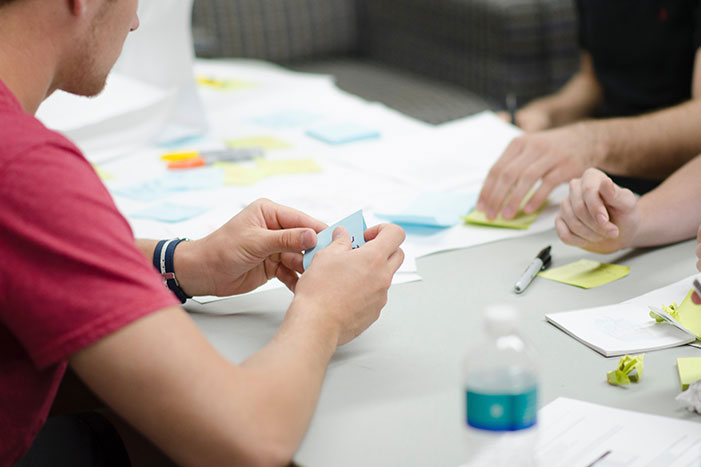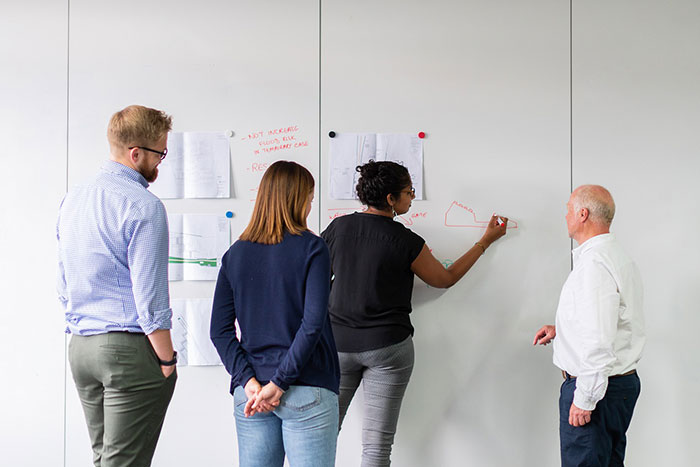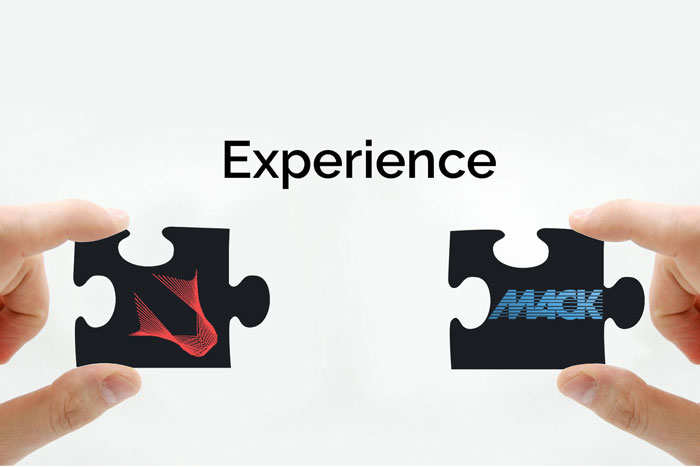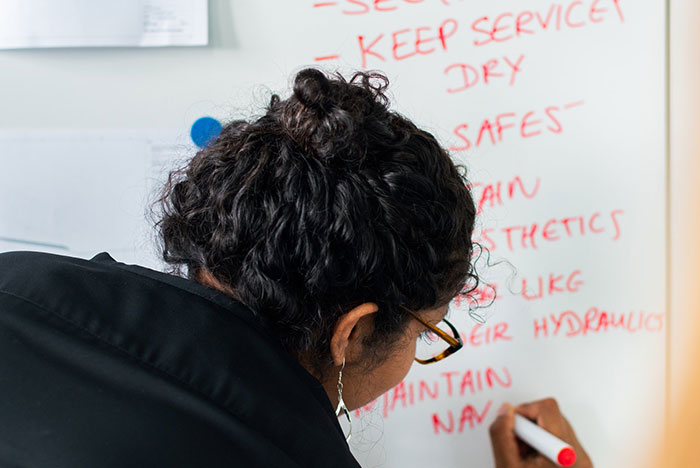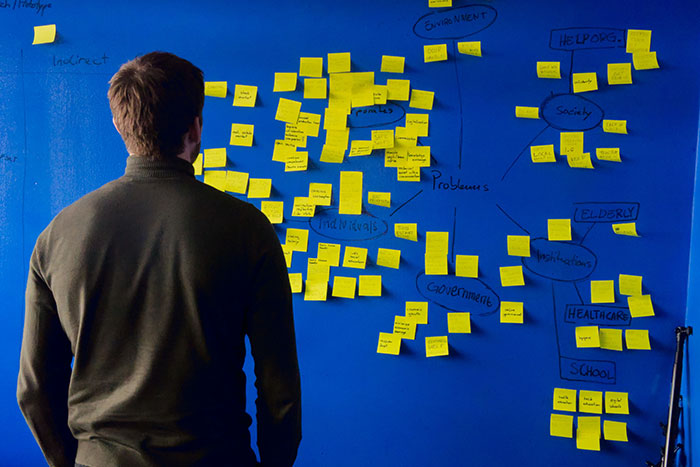
Brainstorming can be a fun exercise to solve a particular problem or expand on an idea. As an inventor, you probably already have an idea of where you would like to start. If not, we recommend starting with a product development specification. The PDS outlines what problem your idea will solve as well as sets a framework for size, materials, and environmental factors. Once you have your PDS in place then you can brainstorm how your idea will solve the problem. Whether you choose to brainstorm in a group or by yourself, remember these key techniques.
1. Stay focused on the problem
We touched upon this above, but you need to know what problem you want to solve before you can begin brainstorming how your idea will solve it. Having a well-defined product development specification is crucial to successful inventing. It helps to keep your PDS readily available during every stage, but especially when problem-solving, so you can refer to it and double-check that your idea meets the requirements. During the design and development process, we constantly refer to the PDS to see if we are on the right track. It’s very easy to go off on a tangent during product development and completely lose track of solving the problem. The result is a product that may have all these amazing bells and whistles but doesn’t solve the original problem.
For example, let’s say your idea is a smart water bottle that could fit into a standard car cupholder and track your water consumption via an app. When brainstorming you focus your efforts entirely on the water tracking aspect of your idea. You then continue developing your water bottle around how best to track water consumption. When you get to the prototype and testing phase you discover that although your water bottle can track consumption down to the ounce, it cannot fit into a standard cup holder because it was overdesigned and too large. If you had been consistently referring to your PDS during brainstorming and design, you would not have lost track of the “must fit in a standard car cupholder” part of the problem. To get it to fit you now need to go back and rework your entire design, costing you, and possibly your investors, lots of time and money.
2. Break the problem into parts
Sitting down and brainstorming a workable solution for a water tracker that connects to an app can be a monstrous undertaking. So, how do we recommend you go about brainstorming a solution? Ignore the problem. But wait, didn’t we say above that you need to focus on the problem? Well, yes and no.
In this case, you need to ignore the big problem and instead focus on small problems within the larger problem. Break down your large problem into small subproblems and brainstorm solutions to those problems individually. This technique helps you keep track of the end goal and prevents you from getting overwhelmed. Eventually, a solution to the giant problem will present itself, but you will never be able to move forward into product design if all progress stops while brainstorming solutions.
Here’s an analogy we thought of while brainstorming examples for this article. Picture yourself at the edge of a body of water filled with hungry sharks and on the opposite shore is a cliff. Your goal is to get to the top of the cliff, but the sharks impede your way. Well, the best thing to do right now is to ignore the sharks and instead think of ways you could solve the problem of how to get to the top of the cliff. At some point, as you brainstorm and come up with all these ways, an idea will present itself that will address the problem of the sharks. However, if you instead focus all your energy and efforts on ways to get past the sharks, you never will find a way up the cliff.
To put it another way using our water bottle example, if you know it needs to fit into a cupholder you can brainstorm ideas that meet size, shape, and material criteria. Additionally, you can brainstorm ideas on how to track water consumption, what technology you need, how to test accuracy, what materials are best, etc. Eventually, when coming up with ideas, you will find a way to mirror the two parts into one cohesive solution.
One final advantage of breaking the problem into subparts is that it helps you keep track of all the parts of the problem you need to solve. If the inventor in our water bottle example above had broken down their problem into the subproblems of “how to track water consumption” and “how to fit into a standard cupholder” they wouldn’t have lost track of a major feature of their product.
3. Keep an open mind
The fastest way to depress ingenuity and stem the flow of ideas is to label an idea as crazy. True, your colleague’s solution could be the most farfetched and improbable idea you’ve ever heard, but another colleague could use their crazy idea as a jumping-off point for a truly remarkable one.
In group brainstorming sessions, let the ideas flow and let everyone have a say. Two common strategies we use are brain dumping and round-robin. During brain dumping, you set a timer and write down every idea that someone comes up with during the time frame. After the time is up, expand on any ideas that closely fall within the product guidelines. With round-robin, each person is given a piece of paper and writes down an idea. They then pass their idea to the next person, who uses the idea on the paper as inspiration for their next idea. This circular swapping of ideas continues until you have several solutions written down. You can then combine them into a cohesive list, remove any duplicates, and expand on each idea further.
No matter what is suggested or what brainstorming strategy you choose, write everything down so you can come back and evaluate each idea later. By keeping an open mind, you will be amazed at the progress you can make and solutions you can come up with. Remember in the end that it may not be your idea that is chosen as the best fit, and that is ok. The whole point of brainstorming as a group is to seek opinions and viewpoints other than your own.
4. The more ideas the better
We have a saying at Synectic that goes “Don’t fall in love with your idea because tomorrow someone will come along with a better one”. It is very easy, when brainstorming, to have your “lightbulb moment” and stop critical thinking and further idea development because you’ve fallen in love with one specific idea. You need to push past it. Write the idea down and continue thinking of other ideas. Once you have a multitude of different ideas go back and evaluate each one and determine which one is the most feasible.
When brainstorming, the idea that fits all the parameters of the PDS and is best from a cost, engineering, and safety standpoint, may not be the idea you love the most. It is important to remember that when all is said and done the product must conform to the guidelines laid out in your product specification. Whatever idea fulfills the product needs most fully is the one that you should further develop.
If you still find yourself stuck on an idea, take a walk, step away from the problem for a day or two, or even pull in additional people to help. Remember, the most important thing to take away when reading anything about brainstorming is that these techniques won’t necessarily solve the specifics of your problem but will give you a direction forward.
Need Brainstorming Help?
About Synectic Product Development: Synectic Product Development is an ISO 13485 compliant, full-scale product development company. Vertically integrated within the Mack Group, our capabilities allow us to take your design from concept all the way to production. With over 40 years of experience in design, development, and manufacturing, we strive for ingenuity, cost-effectiveness, and aesthetics in our designs. Learn more about our product design services and see how we can help your next project.
